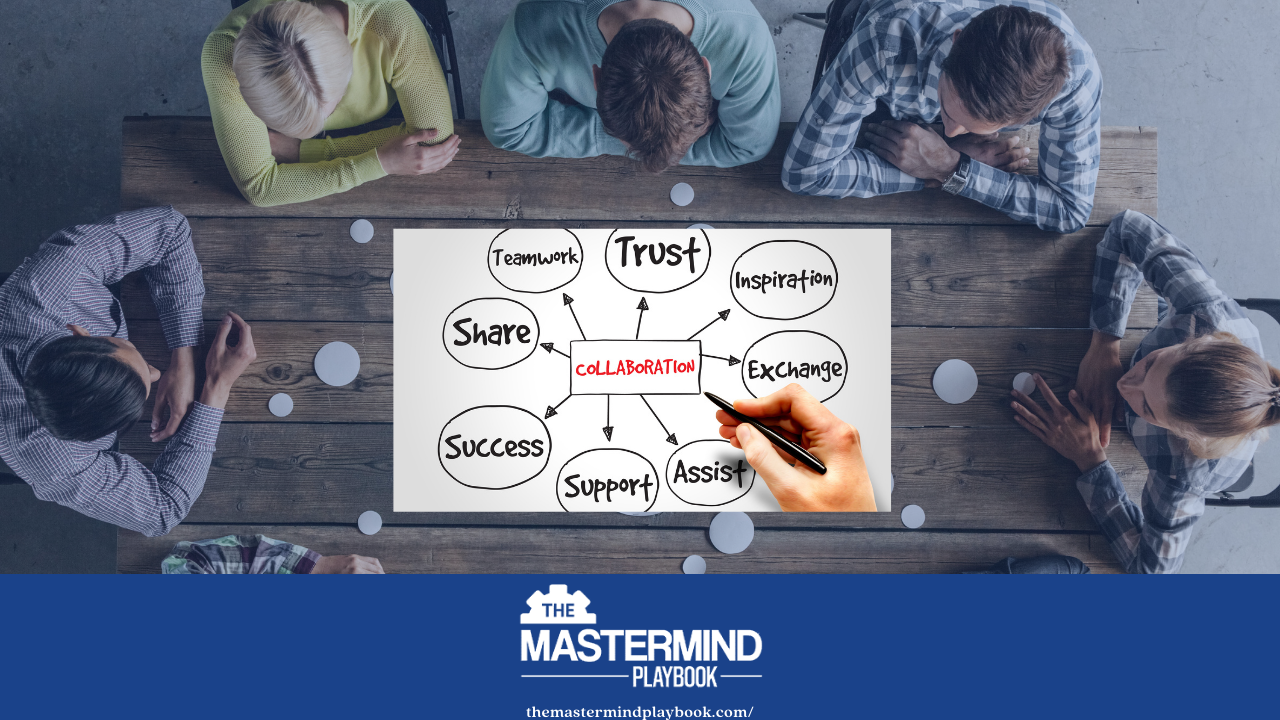How Mastermind Leaders Can Shift Their Mindsets from Competition to Collaboration

The collaborative power of stages changed Peter Vargas’ life forever. Specifically, hearing inspirational speakers on a stage provided the catalyst for him to repair his relationship with his father and found a multi-million dollar company based on connecting people to the right stages and speaking opportunities. Pete even grew his company, Advance Your Reach, by sharing stages with legendary speakers like Michael Phelps, Robert Cialdini, and Sarah Blakely.
Finding the right stage or platform allows leaders to connect to an audience with a powerful spirit of collaboration. This collaborative ethos empowers leaders to tell their story, and open the door to fruitful relationship-building and networking.
Unfortunately, many leaders miss out on opportunities to collaborate with others because they get stuck in a mindset of scarcity and competition. Rather than building win-win relationships, they’re bent on getting ahead by sabotaging others. They see others as competitors instead of collaborators.
Reflecting on this important distinction ties into chapter 10 of Who Not How, titled “Stop Competing and Start Collaborating.”
Replacing Competition with Collaboration
In this chapter, Dan Sullivan discusses how viewing the world through the lens of competition cuts you off from others, and puts you in a state of fear and isolation.
Sullivan gives an example of how a writer named Karen Nance learned of another author writing a biography on the same person as her. Karen immediately saw this other author as a competitor. She stressed over how she would beat her to publication and outsell her book. The stress left her feeling anxious and isolated.
Moreover, Karen’s competitor had more experience writing biographies and a background in history. She had also started writing the biography years before Karen. How could Karen compete with such a seasoned author?
That’s when Karen realized she had to switch her mindset from competition to collaboration. She decided to send the author an email asking if she’d be interested in co-authoring the biography together. The author responded immediately saying she’d be thrilled to join forces, and their collaboration produced a better book than either of them could have hoped to write individually.
Check out The Mastermind Playbook for more examples of how collaboration can produce amazing results.
How Collaboration Leads to Greatness
Sullivan cites many other examples in the chapter including the counterproductive competition between Kobe Bryant and Shaquille O’Neal, arguably one of the reasons why the Lakers didn’t always reach their full potential.
Had these all-stars collaborated instead of competing the team could have achieved even greater success.
Sullivan explains that a focus on “how” makes people isolate themselves and compete with others, whereas a focus on “who” leads people to collaborate with others to achieve a common vision. He also mentions that since technology is becoming increasingly effective at solving problems related to “how,” we should spend more energy finding “who” to collaborate with.
Check out The Mastermind Playbook for more on why connecting with the right people is so important for mastermind leaders.
Why Collaboration is Vital for Mastermind Leaders
As a mastermind leader, it’s crucial to foster a mindset of collaboration among members. That’s because a scarcity-oriented competitive mindset can drive members apart from one another and leave them feeling isolated and alone.
Mastermind members who constantly feel like they must outcompete other members contribute to a toxic, counterproductive group dynamic that holds everyone back from unlocking their full potential.
Check out The Mastermind Playbook for more on why collaborative masterminds are always more successful than competitive ones.
How to Encourage Collaboration in a Mastermind Group
A competitive mindset can strengthen individuals’ egos and leave members hesitant to ask for help and guidance from others. On the other hand, humble members won’t have reservations asking for help and collaborating. Thus, humility forms the foundation of collaboration.
To encourage collaboration, maintain a sense of humility in the group. In order to do so, it’s important not to invite individuals who are arrogant or egotistical into the group, since even a few such individuals can bring out the worst in other members.
When speaking to someone interested in joining your mastermind, get a sense of whether a prospective member can talk about their flaws or failures in a transparent manner. Make sure to admit members who can open up and show vulnerability, or at least have the capacity to do so in a collaborative group that they trust.
Check out The Mastermind Playbook for more information on what to look for when vetting potential new members.
Leading by Example
The most effective way to create a sense of humility and collaboration among mastermind members is to lead by example. It isn’t always easy for a mastermind facilitator to humble themselves and show their vulnerabilities… but it works like none other. What you see as vulnerability, others see as courage.
Mastermind leaders should have the courage to speak about their flaws, failures, and insecurities. As a facilitator, you set the tone for the entire group. Being vulnerable yourself is the best way to encourage members to do the same. This foundation of humility fosters the spirit of collaboration over competition.
Check out The Mastermind Playbook for more tips on creating a collaborative mastermind.

